Forty years after the foundation of Dhagpo Kagyu Ling, one of the first Buddhist centers created in the West, Lama Jampa Thaye came, August 8 and 9, to respond to a question that particularly interests us : What can Buddhism offer the West ? In the 21st century, how can it transform our lives ? What pitfalls must we avoid ?
As Lama Jampa Thaye reminds us, in the guise of an introduction, we tend to look for happiness in external conditions despite the fact that it is to be found in our mind, although we are ignoring it. It’s a bit like having a marvelous treasure in one’s home and all the while searching for it everywhere else. From the beginning of his teaching, Lama Jampa Thaye gave a universal response to the principal question : “the possibility to recognize our nature.” This is what Buddhism can offer us.
To evoke the West’s need for the Dharma and the conditions necessary for its installation, Lama Jampa Thaye went several centuries back in time. The history of Western religion, science and politics displays the various domains in which our ancestors have tried to find happiness — in vain. This absolute quest occurred through diverse reforms and revolutions led by individuals such as Luther, Calvin, or Descartes. So how did Buddhism makes its way to us, among all the various strains of thought, all the scientific discoveries, and the political models ? Lama Jampa Thaye responds that the religious and ideological freedom brought about by the various reforms and revolutions created the necessary space for religions and spiritualites other than Christianity to arrive. Nevertheless, although the early history is relatively unknown or went practically unnoticed, the first contacts between Buddism and the West go back to the Antiquity : first during the time of the Emperor Ashoka (1), who sent an emissary to Alexandria — then the capital of Grecian Egypt — and later through the movement of Manicheism (2). The “true” meeting of Buddhism and the West occurred later, during the colonization of Asia, but the link between these different strains (Japanese, Thai, etc) was not entirely clear. Regardless, we tend to believe that Buddhism arrived quite recently in the West, and meanwhile, it appeared a rather long time ago and, throughout various époques, has gone in and out of fashion. Though the Buddha’s life may seem distant from our own time, if we study it, we can observe many common points between his time and our own, despite the 2,500 years that separate us.
Lama Jampa Thaye follows up with another question, no less essential : What does it means to “be Buddhist” ? To be Buddhist means, above all else, to take refuge in the three jewels : we undertake this approach in order to be protected from suffering, from self-centeredness, and from the misunderstanding of reality. Three kinds of motivation can bring us to take refuge : fear, faith, and compassion.
That said, one can relate to being Buddhist in two ways : through trust or through understanding. This trust is that which we develop through contemplating the qualities of the three jewels : the Buddha (the goal), the Dharma (the path), and the Sangha (the guides). Understanding the sense of the three jewels prevents one from developing false views — such as sectarianism — and encourages us to follow the general precepts of taking refuge — such as the resolution not to harm others. Understanding, in and of itself, develops through reflection on the Four Seals, which dissipate four false beliefs. The Four Seals constitute impermanence, suffering, the absence of a truly-existing self of any composite phenomena, and the peace brought about by the achievement of nirvana (enlightenment), a non-composite phenomena that engenders the cessation of suffering and its causes.
In the day-to-day, we live the Dharma through training in three domains particularly appropriate for our era : wisdom (investigation and analysis into the nature of things), meditation (experience which refines our focus) and ethics. To avoid misunderstanding the developing Western Buddhism, it is important to know both where we come from (the conditions that allowed for its arrival and taking root here) and the true characteristics of the Dharma. Through his teaching, Lama Jampa Thaye generously put his knowledge of these subjects at our disposition.
(1) Indian emperor, c. 300-400 BCE.
(2) Religion founded in the 3rd century BCE, combining Christianity, Zoroastrianism, and Buddhism.
Many thanks to Lama Puntso for sharing his notes.

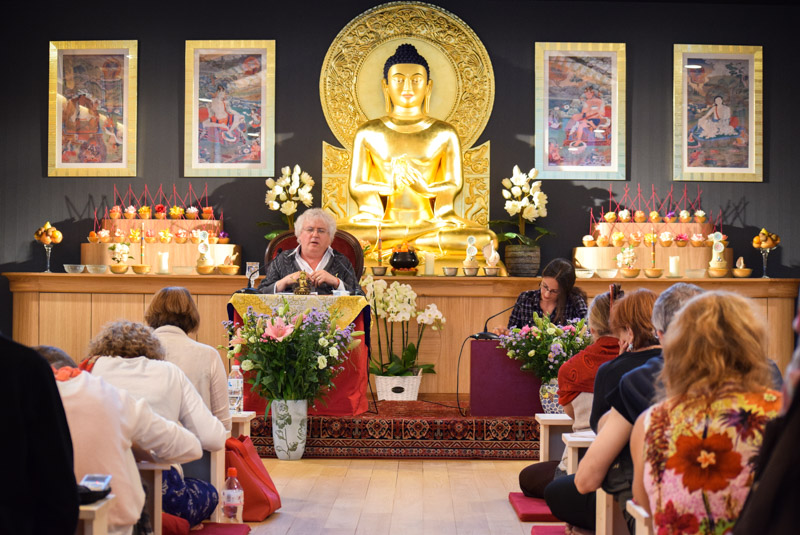
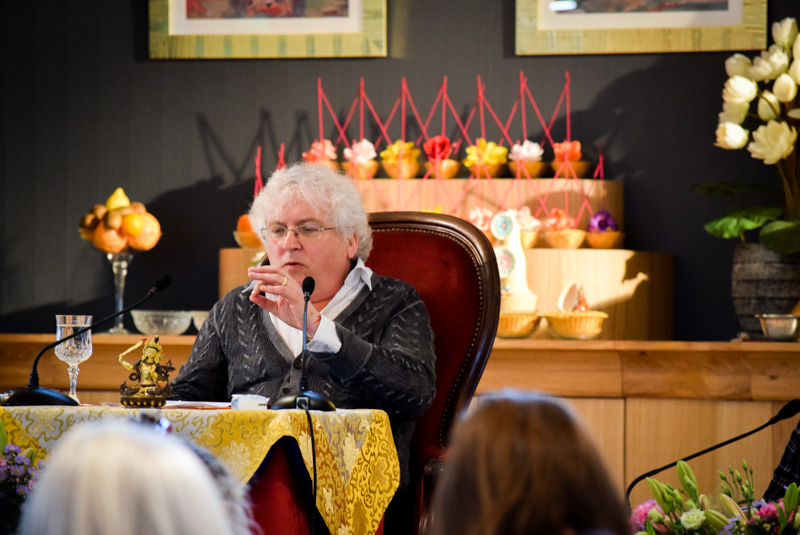
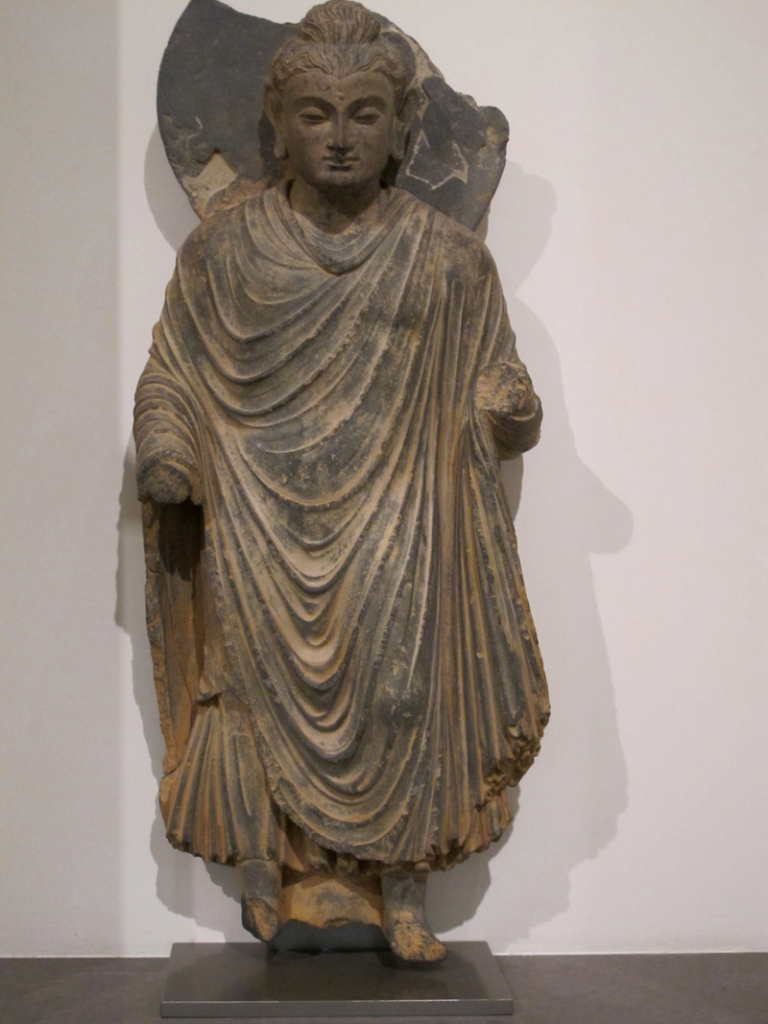
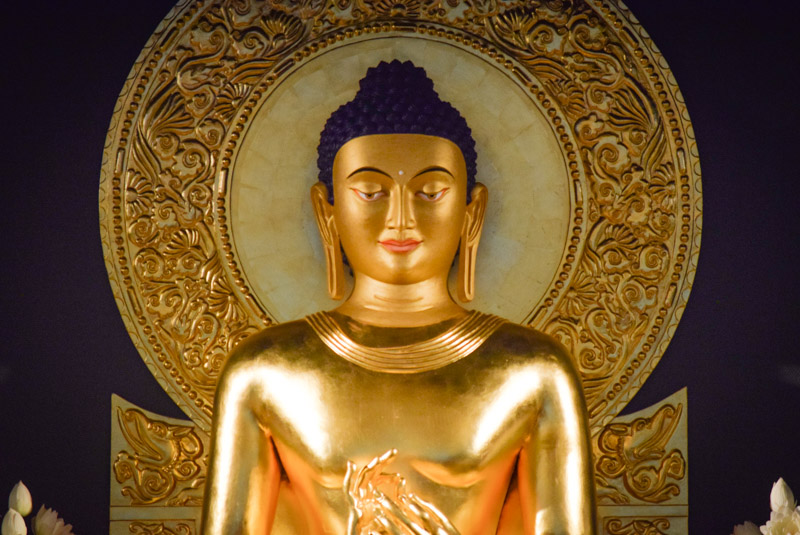

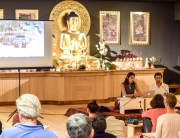
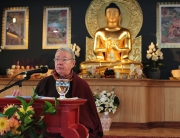
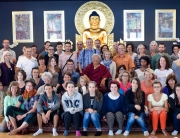




Leave A Comment